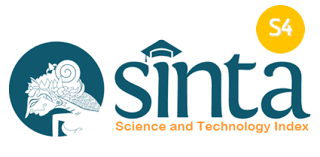Learning Figurative Language through Taylor Swift’s ‘Willow”: A Genre-Based and Multimodal Framework for Secondary ELT
Abstract
Learning figurative language remains a complex yet important aspect of English language education. It often challenges students due to its abstract nature and cultural depth. The purpose of this study is to investigate how Taylor Swift’s Willow and its music video can be integrated as multimodal materials for teaching figurative language through the six English language skills: listening, speaking, reading, writing, viewing, and representing. Using a qualitative method based on literature analysis, the study develops a structured lesson plan grounded in the Genre-Based Approach (GBA) and aligned with Sustainable Development Goals (SDGs). This study identifies that Willow contains rich figurative elements such as simile, metaphor, personification, hyperbole, and symbolism. These elements not only enhance linguistic understanding but also provide cultural and emotional depth. The music video further supports comprehension by giving symbolic visual cues, making abstract meanings more understandable for learners. The lesson plan outlines three meetings, each focusing on different skill pairs while embedding the five stages of GBA. The study highlights that incorporating Willow as a multimodal learning resource supports students’ critical and creative thinking, improves cultural understanding, and increases engagement. It is a relatable and effective method for teaching figurative language in modern English classrooms.
Keywords: figurative language, multimodal learning, Taylor Swift, lesson plan, GBA
Full Text:
PDFReferences
Agustien, H. I. R. (2020). Implementing A Text-based Approach in English Language Teaching (W. A. Renandya & N. Hayati, eds.). Malang: TEFLIN Publication Division in collaboration with Bintang Sejahtera Press.
Al-Hamdun, S., & Al Mozari, S. (2024). Exploring the Contribution of Film and Music in Learning English Idioms. Research Studies in English Language Teaching and Learning, 2(1), 11–20. https://doi.org/10.62583/rseltl.v2i1.33
Aljadaan, N. (2018). Understanding Hyperbole. Arab World English Journal, (October), 1–31. https://doi.org/http://dx.doi.org/10.24093/awej/th.212
Bawemenewi, E. P. S., & Swarniti, N. W. (2024). Analysis of Figurative Language in “Rewrite the Stars” Song Lyrics. Pragmatica: Journal of Linguistics and Literature, 2(1), 1–8. https://doi.org/https://doi.org/10.60153/pragmatica.v2i1.53
Brown, H. D. (2001). Teaching by Principles: An Interactive Approach to Language Pedagogy (2nd ed.) (2nd ed.). San Fransisco: Longman.
Damayanti, S. (2018). Relevancy The Components of The English Lesson Plan. English Journal, 12, 68–78. https://doi.org/https://doi.org/10.32832/english.v12i2.3772
Faloye, B. O., Obateru, O. T., & Alonge, S. G. (2021). Language Teachers and Digital Literacy: Assessing Viewing and Representing as Language Skills. SSRN Electronic Journal, 9(3), 1–10. https://doi.org/10.2139/ssrn.3814763
Hayeesa-i, T., & Maisarah, I. (2023). Similes analysis in Thai literature: A case study of “The happiness of Kati” in the English version. Journal of Applied Studies in Language, 7(2), 216–226. https://doi.org/10.31940/jasl.v7i2.216-226
Jamila, M., & Rahman, M. (2024). Listening Skills in Classroom Practices and Testing Systems at the Secondary Level in Bangladesh : An Empirical Appraisal. 9(November), 321–338.
Jankovic, L. (2020). Beneficial Effects of Music on Efl Learning. Facta Universitatis, Series: Visual Arts and Music, (September), 105. https://doi.org/10.22190/fuvam1902105j
Krashen, S. D. (1982). Principles and Practice in Second Language Acquisition (Internet E). California: Pergamon Press Inc. Retrieved from https://www.sdkrashen.com/content/books/principles_and_practice.pdf
Kress, G., & Leeuwen, T. Van. (2001). Multimodal Discourse: The Modes and Media of Contemporary Communication. Arnold. Retrieved from https://books.google.co.id/books?id=z5ZlJ61JkVAC&hl=id&source=gbs_citations_module_r&cad=2
Kurnia Aliffia, Y., & Arifani, Y. (2024). The Utilization of Using YouTube Videos to Improve Students Speaking Skills During Online Learning at Ban Kaengsriphoom School, Thailand. Jurnal of English Development, 4(01), 1–14. https://doi.org/https://doi.org/10.25217/jed.v3i01.3766
Lakoff, G., & Johnson, M. (1980). Metaphors We Live By (Paperback). London: The University of Chicago Press.
Maduwu, B. (2016). Pentingnya Pembelajaran Bahasa Inggris di Sekolah. Jurnal Warta Edisi, 5, 7.
Mitsalina, E., Fauziyah, W., & Nabila, Z. (2024). An Analysis of Figurative Languages and Moral Values in Selected Songs of Shawn Mendes. English Education and Literature Journal (E-Jou), 4(01), 1–9. https://doi.org/10.53863/ejou.v4i01.1041
Nainggolan, F., Siahaan, D. A., Sinurat, B., & Herman, H. (2021). An analysis of Figurative Language on Joe Biden’s Victory Speech. International Journal on Integrated Education, 4(3), 364–375. Retrieved from https://journals.researchparks.org/index.php/IJIE/article/view/1514
Nur Fadilla, D. A. N., Ariani, S., & Dewi Max, J. I. S. (2023). a Stylistic Analysis of Figurative Language in Ariana Grande’S Song Lyrics. Ilmu Budaya: Jurnal Bahasa, Sastra, Seni, Dan Budaya, 7(4), 1301–1312. https://doi.org/10.30872/jbssb.v7i4.8705
Nuriyah, W. A., & Afifi, N. (2023). English Foreign Language Digital Literacy At Pesantren Based School in Indonesia: a Systematic Research Review. … (Professional Journal of English …, 6(4), 660–675. Retrieved from http://www.journal.ikipsiliwangi.ac.id/index.php/project/article/view/14801
Nursolihat, S., & Kareviati, E. (2020). an Analysis of Figurative Language Used in the Lyric of “a Whole New World” By Zayn Malik and Zhavia Ward. PROJECT (Professional Journal of English Education), 3(4), 477–482. https://doi.org/10.22460/project.v3i4.p477-482
Perrine, L. (1977). Sound and Sense an Introduction to Poetry (5th ed.). New York: Harcourt Brace Jovanovich.
Sadaf, H., Rasheed, B., & Ahmad, A. (2024). Exploring the Role of YouTube Lectures, Vlogs, and Videos in Enhancing ESL Learning. Journal of Asian Development Studies, 13(2), 657–670. https://doi.org/10.62345/jads.2024.13.2.52
Trust, G. (2021, April). Taylor Swift’s “Willow” Hits No. 1 on Adult Pop Airplay Chart. Billboard. Retrieved from https://www.billboard.com/pro/taylor-swift-willow-tops-adult-pop-airplay/
Yuliasari, R., & Virtianti, R. (2023). Figurative Language in ‘Red’ Song Lyrics by Taylor Swift. Pujangga, 9(1), 1–14. https://doi.org/10.47313/pujangga.v9i1.2330
Yunanda, F., Kevin, Y., Pardede, P., Wati, N. E., Basataka, J., Deaparin, A. S., … Tafonao, K. (2021). The Analysis of Figurative Language in Song Lyric by Indina Menzel. Jurnal Basataka, 4(2), 129–138. Retrieved from https://jurnal.pbsi.uniba-bpn.ac.id/index.php/BASATAKA/article/view/127
DOI: http://dx.doi.org/10.30984/jeltis.v5i1.3597
Article Metrics
Abstract view : 79 timesPDF - 39 times
Refbacks
- There are currently no refbacks.






